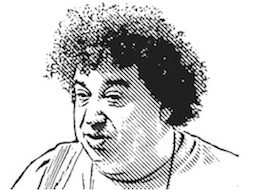Le Séminaire de Combinatoire Enumérative et Analytique, également appelé Séminaire Philippe Flajolet depuis 2011, a pour objectif de couvrir un large spectre de recherche en combinatoire, et est ouvert à tou·te·s les chercheur·se·s et étudiant·e·s intéressé·e·s.
Le séminaire a lieu à l’IHP en salle Yvette Cauchois (bâtiment Perrin, second étage).
Prochaine séance : Jeudi 03 avril 2025
Il y a une retransmission Zoom ici pour les exposés de cet après-midi. Passcode: zS4hig5Q
Nous écouterons
-
- 11h: Pierre Tarrago (LPSM, UPMC Paris),
Approche combinatoire pour le problème de Horn probabiliste et sa version unitaire
- 11h: Pierre Tarrago (LPSM, UPMC Paris),
Le problème de Horn probabiliste consiste en le calcul de la densité de la loi des valeurs propres d'une somme de matrices hermitiennes aléatoires, chacune d'elle étant tirée uniformément au hasard parmi celles ayant un spectre prescrit. Dans la première partie de cet exposé, nous verrons comment la combinatoire de la théorie des représentations du groupe unitaire a permis à Knutson et Tao de trouver une solution élégante à ce problème. Dans un deuxième temps, nous introduirons une version unitaire du problème de Horn probabiliste et son rôle dans certaines théories physiques. Nous expliquerons enfin comment une généralisation de la combinatoire précédemment introduite permet de résoudre également le cas unitaire. Cet exposé s'appuie sur un travail en collaboration avec Quentin François.
-
- 14h: Sofia Tarricone (IMJ-PRG),
Discrete Painlevé equations for maps and partitions
- 14h: Sofia Tarricone (IMJ-PRG),
In this talk we will see how the discrete Painlevé I and II equations appear in two different and well-known combinatorial problems : the first one in relation with planar maps and the second one instead in the study of the Poissonized Plancherel measure for random partitions. We will see that the common denominator behind these phenomenon is the presence of orthogonal polynomials. We will further explain how this tool allows us to extend these results from one side for the two-point functions for planar maps and from the other side for multicritical Schur measures for random partitions (based on work in progress with J. Bouttier and a collaboration with T. Chouteau).
-
- 15h: Wenjie Fang (LIGM, Univ Gustave Eiffel),
Tamari intervals and blossoming trees
- 15h: Wenjie Fang (LIGM, Univ Gustave Eiffel),
We introduce a simple bijection between Tamari intervals and the blossoming trees (Poulalhon and Schaeffer, 2006) encoding planar triangulations, using a new meandering representation of such trees. Its specializations to the families of synchronized, Kreweras, new/modern, and infinitely modern intervals give a combinatorial proof of the counting formula for each family. Compared to (Bernardi and Bonichon, 2009), our bijection behaves well with the duality of Tamari intervals, enabling also the counting of self-dual intervals.
Liste des séances de l’année
Les séances de l’année 2024-2025 ont lieu :
-
- jeudi 10 octobre 2024
- Nicolas Broutin
- Marthe Bonamy
- Florent Hivert
- jeudi 05 décembre 2024
- Bram Petri
- Eleanor Archer
- Frédéric Chapoton
- jeudi 06 février 2025
- Baptiste Louf
- Adeline Pierrot
- Thomas Dreyfus
- jeudi 03 avril 2025
- Pierre Tarrago
- Sofia Tarricone
- Wenjie Fang
- jeudi 05 juin 2025
- Florent Koechlin
- Sophie Morier-Genoud
- Mohab Safey El Din
- jeudi 10 octobre 2024
